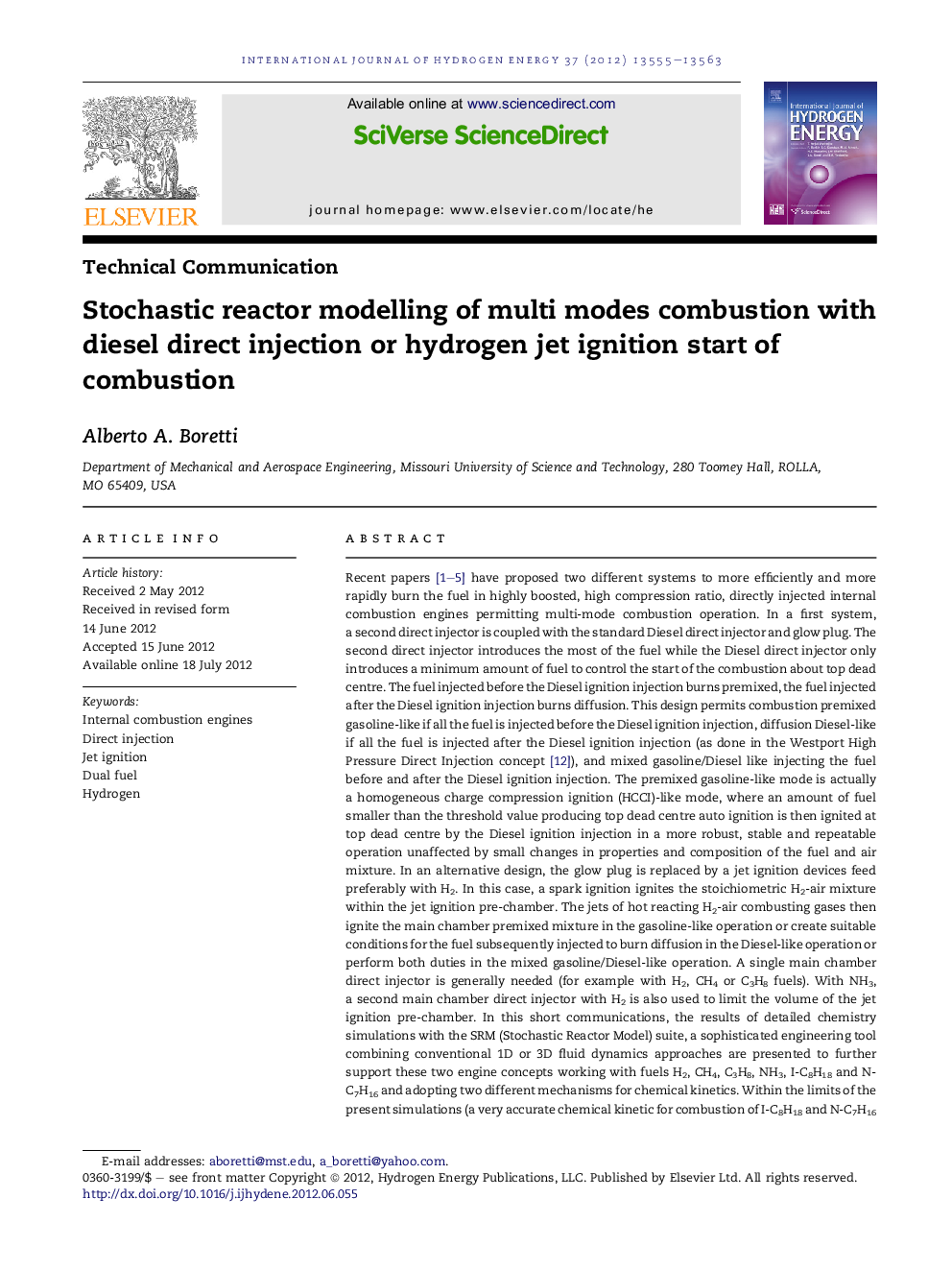| کد مقاله | کد نشریه | سال انتشار | مقاله انگلیسی | نسخه تمام متن |
|---|---|---|---|---|
| 1282253 | 1497551 | 2012 | 9 صفحه PDF | دانلود رایگان |

Recent papers [1], [2], [3], [4] and [5] have proposed two different systems to more efficiently and more rapidly burn the fuel in highly boosted, high compression ratio, directly injected internal combustion engines permitting multi-mode combustion operation. In a first system, a second direct injector is coupled with the standard Diesel direct injector and glow plug. The second direct injector introduces the most of the fuel while the Diesel direct injector only introduces a minimum amount of fuel to control the start of the combustion about top dead centre. The fuel injected before the Diesel ignition injection burns premixed, the fuel injected after the Diesel ignition injection burns diffusion. This design permits combustion premixed gasoline-like if all the fuel is injected before the Diesel ignition injection, diffusion Diesel-like if all the fuel is injected after the Diesel ignition injection (as done in the Westport High Pressure Direct Injection concept [12]), and mixed gasoline/Diesel like injecting the fuel before and after the Diesel ignition injection. The premixed gasoline-like mode is actually a homogeneous charge compression ignition (HCCI)-like mode, where an amount of fuel smaller than the threshold value producing top dead centre auto ignition is then ignited at top dead centre by the Diesel ignition injection in a more robust, stable and repeatable operation unaffected by small changes in properties and composition of the fuel and air mixture. In an alternative design, the glow plug is replaced by a jet ignition devices feed preferably with H2. In this case, a spark ignition ignites the stoichiometric H2-air mixture within the jet ignition pre-chamber. The jets of hot reacting H2-air combusting gases then ignite the main chamber premixed mixture in the gasoline-like operation or create suitable conditions for the fuel subsequently injected to burn diffusion in the Diesel-like operation or perform both duties in the mixed gasoline/Diesel-like operation. A single main chamber direct injector is generally needed (for example with H2, CH4 or C3H8 fuels). With NH3, a second main chamber direct injector with H2 is also used to limit the volume of the jet ignition pre-chamber. In this short communications, the results of detailed chemistry simulations with the SRM (Stochastic Reactor Model) suite, a sophisticated engineering tool combining conventional 1D or 3D fluid dynamics approaches are presented to further support these two engine concepts working with fuels H2, CH4, C3H8, NH3, I-C8H18 and N-C7H16 and adopting two different mechanisms for chemical kinetics. Within the limits of the present simulations (a very accurate chemical kinetic for combustion of I-C8H18 and N-C7H16 but a much less accurate chemical kinetic for the other fuels and especially for NH3, unavailability of variable composition and variable properties multiple injections), the Diesel injection ignition and the hydrogen jet ignition are proved to permit combustion modes leading to indicated thermal efficiencies up to 10% better than the latest Diesels at high loads within the same peak pressure and peak temperature constraints.
Journal: International Journal of Hydrogen Energy - Volume 37, Issue 18, September 2012, Pages 13555–13563